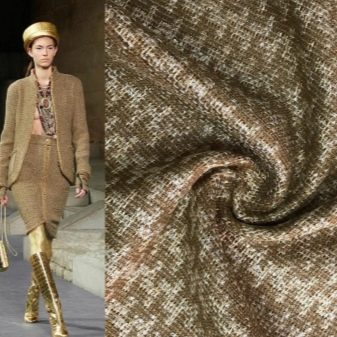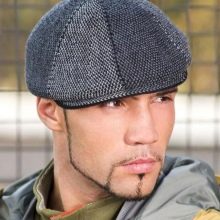What is cheviot and how to care for the fabric?

Many people will be very interested in what it is - cheviot, what is the description of the fabric. It is useful to study the specifics of production. But from a practical point of view, it is more important to pay attention to the application and rules of care.
What it is?
Contrary to the external impression, the word "cheviot" has nothing to do with France. It goes back to the name of the Cheviot Hills massif. The Russian name for matter appeared due to a distortion during mastering the word in French. This is a dense fabric with a pronounced pile. Such a characteristic feature of the Cheviot is noted as its delicate structure; matter is formed by the twill weave method.
It is no coincidence that Cheviot Hills is associated with such a fabric. It was there that they first began to graze a breed of sheep, the wool of which was used to make the cheviot. Later they mastered the use of wool of other merino-like breeds.
It is worth noting that sometimes under the name "cheviot" appears an inexpensive fabric obtained from nettle threads. The basis for this identification is visual similarity.



Features of production
Today, a whole category of inexpensive materials is called cheviot. They are still produced by intertwining threads using the twill method. Basically, such products are still made in the same way in England, a certain amount in the USA. Output in the PRC is also gradually increasing. To obtain it, they try to use semi-coarse woolen yarn with a heterogeneous structure.
Cheviot, with proper production, acquires a certain elasticity. The use of twill weave leaves a characteristic result - diagonal stripes are formed on the surface. They are usually not too large. The basis can be taken from a woolen cloth based not only on wool, but also on semi-wool.Cotton yarn can also be added there.


The cheviot is usually made smoothly colored, without a pattern. Basically, it is painted in dark colors:
- black;
- Gray;
- blue color.
It is generally accepted that the cheviot is a subtype of tweed. Therefore, such a fabric:
- hygroscopic;
- tolerates mechanical wear;
- comfortable;
- keeps warm;
- little subject to wear;
- consists only of natural raw materials;
- good air permeability.


You can recognize a real traditional Cheviot by the very twill weave, or rather, by the diagonal rib it produces. The purely wool version is considered classic. True, in order to reduce the cost of production, a certain part of viscose, cotton or synthesized fibers is added to wool. This solution also makes it possible to ensure the lightness of the produced matter; in some cases, pure nettle imitation of cheviot is still made.
The worsted type is obtained from a thin fleece that is twisted. Such material is elastic and shines well. The cloth appearance of the cheviot is noticeably tougher. Half-woolen fabric is actively used for sewing costumes. The staple cheviote is given a structure close to normal wool, and in the past, this is the product that was released for the production of uniforms.


Application
This fabric is in demand for business and formal suits. Such clothes look extremely respectable. The half-woolen version is well suited for the manufacture of uniforms (both for school and for the armed forces, security, and the like). If we talk about such an option as cotton and staple textiles, then it is inexpensive. This is a good choice for your everyday wardrobe in the summer.
The area of use is largely predetermined by the type of canvas. The cloth cheviot is distinguished by a relatively rough texture. This dense fabric is mainly released for the production of outerwear. The worsted type is more elegant and looks better in the office. Cheviot is often used in the production of:
- coat;
- poncho;
- raincoats;
- men's and women's suits;
- clothing for hunting and equestrian sports;
- sometimes - caps and other hats.



Care
This fabric is very practical and easy to clean. It is machine washable. It is advisable to use a delicate or gentle mode (in different cases it can be called differently). The optimum temperature is 30 degrees. Too much heat can cause the cheviot to shrink.
If possible, the use of chemically active detergents, including those containing chlorine, should be excluded. Machine programs should be used without spinning. Even in gentle spinning mode, spinning can cause deformation. It is advisable to simply allow excess water to drain. Dry cheviot products horizontally, away from any heat sources, excluding direct sunlight.
Ironing is preferably gentle, with the choice of the wool program. Clothes must be turned inside out. Putting gauze on is desirable. Storage of cheviot products should take place in a case, if impossible - in a regular cabinet.










